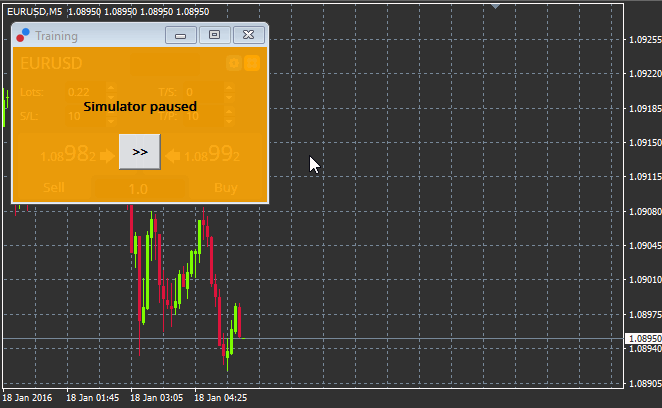
There are several key areas to look out for when looking for stock value. These include Dividend yield and price-tobook ratio. These factors can make a huge difference in identifying bargain companies. Although listed companies can be valued at a higher premium to unlisted businesses, they still are worth a glance.
Price-to-book
Stocks' price-to book value is a financial ratio that helps identify undervalued stocks. This compares a company’s book value to its market capitalization, which is the total assets less all liabilities. Ideally, you want to invest in companies with a price-to-book value ratio less than one.

A stock that has a high price-to-book ratio will be considered expensive relative to its actual book value. On the other hand, a stock that has a low P/B is considered undervalued. A low P/B is generally a sign that a company might be undervalued. However there are some instances when a high proportion of P/B could signal trouble.
Dividend yield
Dividend yield measures the amount of money that a stock firm pays out in dividends each year. The dividend yield is often expressed in percentages. It is calculated by multiplying the stock price by the annual dividend. You can also express dividend yield as a percentage of portfolio value.
Dividend yield in stocks is dependent on the current interest-rate on the FD. Dividends will be paid either at 1.5% or 2.5%. The amount withheld will depend on how much income the stock has earned. The dividend yield will increase if the current rate is higher.
Debt levels
When making investment decisions, you should consider the amount of stock debt. For long-term investors, it may be prudent to steer clear of high-risk stocks and focus on a diversified portfolio. Long-term debt can greatly distort the balance sheet of a stock because of the larger amount of money involved. However, debts of large size can have the highest growth.

Debt levels in stocks may be a useful indicator to consider if a stock is overvalued. However, equity investors tend to focus on short-term performance and therefore, debt may not be an immediate concern. Municipal bonds could offer some protection against higher amounts of debt. The level of municipal debt has remained relatively stable over the years. Furthermore, state and local governments have borrowing limits, which help control the amount of debt they issue.
FAQ
Which fund would be best for beginners
The most important thing when investing is ensuring you do what you know best. FXCM is an excellent online broker for forex traders. They offer free training and support, which is essential if you want to learn how to trade successfully.
If you don't feel confident enough to use an internet broker, you can find a local office where you can meet a trader in person. You can ask them questions and they will help you better understand trading.
Next would be to select a platform to trade. CFD platforms and Forex trading can often be confusing for traders. Although both trading types involve speculation, it is true that they are both forms of trading. Forex, on the other hand, has certain advantages over CFDs. Forex involves actual currency exchange. CFDs only track price movements of stocks without actually exchanging currencies.
Forecasting future trends is easier with Forex than CFDs.
Forex is volatile and can prove risky. For this reason, traders often prefer to stick with CFDs.
Summarising, we recommend you start with Forex. Once you are comfortable with it, then move on to CFDs.
What are the 4 types?
There are four main types: equity, debt, real property, and cash.
Debt is an obligation to pay the money back at a later date. It is commonly used to finance large projects, such building houses or factories. Equity can be described as when you buy shares of a company. Real estate refers to land and buildings that you own. Cash is what you currently have.
You become part of the business when you invest in stock, bonds, mutual funds or other securities. You share in the losses and profits.
Is it possible to earn passive income without starting a business?
Yes, it is. Many of the people who are successful today started as entrepreneurs. Many of them were entrepreneurs before they became celebrities.
You don't necessarily need a business to generate passive income. Instead, create products or services that are useful to others.
Articles on subjects that you are interested in could be written, for instance. You can also write books. You might also offer consulting services. You must be able to provide value for others.
How can you manage your risk?
Risk management refers to being aware of possible losses in investing.
It is possible for a company to go bankrupt, and its stock price could plummet.
Or, a country's economy could collapse, causing the value of its currency to fall.
When you invest in stocks, you risk losing all of your money.
Remember that stocks come with greater risk than bonds.
A combination of stocks and bonds can help reduce risk.
This will increase your chances of making money with both assets.
Spreading your investments over multiple asset classes is another way to reduce risk.
Each class comes with its own set risks and rewards.
For example, stocks can be considered risky but bonds can be considered safe.
If you are looking for wealth building through stocks, it might be worth considering investing in growth companies.
You might consider investing in income-producing securities such as bonds if you want to save for retirement.
Do I need to buy individual stocks or mutual fund shares?
The best way to diversify your portfolio is with mutual funds.
They are not suitable for all.
You shouldn't invest in stocks if you don't want to make fast profits.
Instead, choose individual stocks.
Individual stocks give you greater control of your investments.
You can also find low-cost index funds online. These funds let you track different markets and don't require high fees.
Do I need to diversify my portfolio or not?
Many believe diversification is key to success in investing.
Many financial advisors will advise you to spread your risk among different asset classes, so that there is no one security that falls too low.
But, this strategy doesn't always work. In fact, it's quite possible to lose more money by spreading your bets around.
For example, imagine you have $10,000 invested in three different asset classes: one in stocks, another in commodities, and the last in bonds.
Let's say that the market plummets sharply, and each asset loses 50%.
At this point, there is still $3500 to go. But if you had kept everything in one place, you would only have $1,750 left.
In reality, your chances of losing twice as much as if all your eggs were into one basket are slim.
It is essential to keep things simple. Don't take more risks than your body can handle.
What are the best investments for beginners?
Start investing in yourself, beginners. They should learn how manage money. Learn how to prepare for retirement. Budgeting is easy. Learn how research stocks works. Learn how to read financial statements. Avoid scams. Learn how to make wise decisions. Learn how to diversify. Learn how to guard against inflation. Learn how to live within their means. Learn how to save money. Learn how to have fun while you do all of this. You will be amazed at the results you can achieve if you take control your finances.
Statistics
- As a general rule of thumb, you want to aim to invest a total of 10% to 15% of your income each year for retirement — your employer match counts toward that goal. (nerdwallet.com)
- Most banks offer CDs at a return of less than 2% per year, which is not even enough to keep up with inflation. (ruleoneinvesting.com)
- Some traders typically risk 2-5% of their capital based on any particular trade. (investopedia.com)
- According to the Federal Reserve of St. Louis, only about half of millennials (those born from 1981-1996) are invested in the stock market. (schwab.com)
External Links
How To
How to invest stocks
One of the most popular methods to make money is investing. This is also a great way to earn passive income, without having to work too hard. You don't need to have much capital to invest. There are plenty of opportunities. There are many opportunities available. All you have to do is look where the best places to start looking and then follow those directions. The following article will show you how to start investing in the stock market.
Stocks represent shares of company ownership. There are two types of stocks; common stocks and preferred stocks. The public trades preferred stocks while the common stock is traded. Shares of public companies trade on the stock exchange. They are valued based on the company's current earnings and future prospects. Stocks are bought to make a profit. This process is called speculation.
Three main steps are involved in stock buying. First, choose whether you want to purchase individual stocks or mutual funds. Second, select the type and amount of investment vehicle. The third step is to decide how much money you want to invest.
Choose whether to buy individual stock or mutual funds
It may be more beneficial to invest in mutual funds when you're just starting out. These professional managed portfolios contain several stocks. When choosing mutual funds, consider the amount of risk you are willing to take when investing your money. Some mutual funds carry greater risks than others. If you are new to investments, you might want to keep your money in low-risk funds until you become familiar with the markets.
If you would prefer to invest on your own, it is important to research all companies before investing. Check if the stock's price has gone up in recent months before you buy it. The last thing you want to do is purchase a stock at a lower price only to see it rise later.
Choose Your Investment Vehicle
After you have decided on whether you want to invest in individual stocks or mutual funds you will need to choose an investment vehicle. An investment vehicle is simply another method of managing your money. You could for instance, deposit your money in a bank account and earn monthly interest. You could also create a brokerage account that allows you to sell individual stocks.
You can also establish a self directed IRA (Individual Retirement Account), which allows for direct stock investment. Self-Directed IRAs are similar to 401(k)s, except that you can control the amount of money you contribute.
Your needs will determine the type of investment vehicle you choose. Are you looking to diversify, or are you more focused on a few stocks? Are you looking for growth potential or stability? How confident are you in managing your own finances
All investors must have access to account information according to the IRS. To learn more about this requirement, visit www.irs.gov/investor/pubs/instructionsforindividualinvestors/index.html#id235800.
Find out how much money you should invest
The first step in investing is to decide how much income you would like to put aside. You can either set aside 5 percent or 100 percent of your income. The amount you choose to allocate varies depending on your goals.
You might not be comfortable investing too much money if you're just starting to save for your retirement. On the other hand, if you expect to retire within five years, you may want to commit 50 percent of your income to investments.
Remember that how much you invest can affect your returns. So, before deciding what percentage of your income to devote to investments, think carefully about your long-term financial plans.